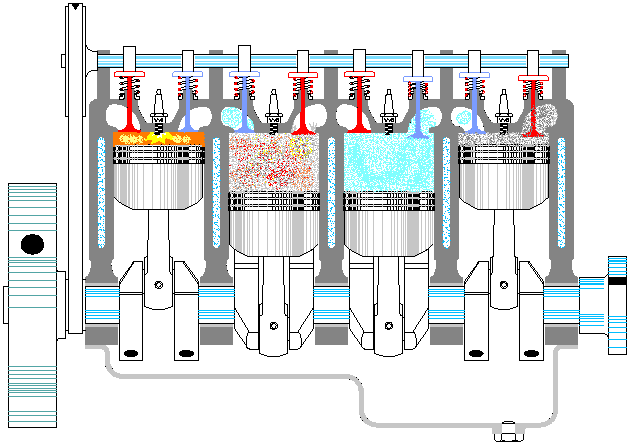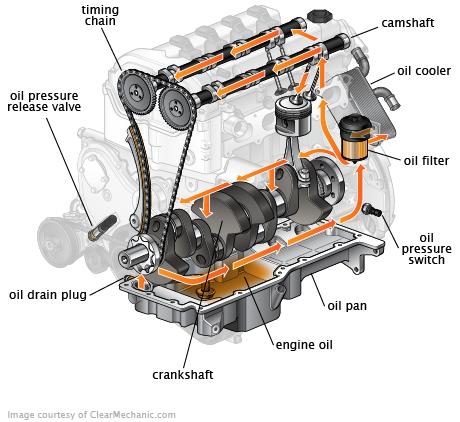
Every year there's always some moron from Yahoo, Buzzfeed, or the like that writes an article about why you shouldn't let your car warm up. These "5 minute mechanics" searched some in Google and suddenly realized that cars warming up waste fuel *gasp!*, and thus write articles telling thousands of Americans why letting their car warm up is wrong.
Well I'm here to tell you why (with facts) you should let your car warm up.
Internal Combustion Engines (ICE) and you:

Without giving you a whole engineering lesson, all you really need to know about ICE is that they:
- Use an air/fuel mixture to create combustion
- Have lots of moving parts
When your engine starts cold (even in the summer when it's hot outside, the engine STILL starts cold, engines operate at high temperatures of 100 C or 212 F usually), multiple things happen. These processes are known as "warming up" the engine, literally and figuratively.
First, your engine uses a "rich" air/fuel ratio to create combustion. This means the engine is using more fuel than it ideally needs. Why do engines do this? Well, when you fill your car up with fuel, have you noticed that it's a liquid? To mix fuel and air for the air/fuel mixture, that fuel can't be a liquid, it needs to be a vapor. When it's cold (again, relatively here, since engines run at high temps) that fuel cannot vaporize as easy, so more fuel than what is normally necessary needs to be used in order to mix in enough vapor to maintain a proper air/fuel mixture for combustion. It's sort of how like hot water from your shower can vaporize into steam easier than a glass of water that's been in a fridge. Once your engine is warmed up and at operational temp (usually 212 F or 100 C), it will be able to vaporize the fuel easily and thus use less fuel to run.
Second, oil gets everywhere. Do you see all of those moving parts in that GIF I posted above? Those moving parts create friction, and friction sucks. Not only does it make the engine less efficient in producing power, it also creates wear and tear. So how do we prevent this friction from destroying everything? With oil. Oil's purpose is to lubricate the moving parts of an engine to prevent friction, as well as to remove any dirty stuff from the engine (this is why you need to change your oil every so often, dirty stuff gets in it and it also becomes less effective in lubricating over time). When your car first starts up, there isn't oil being pumped to all of the moving parts yet, your engine needs time to get everything all slippery in there. Second, oil has a high viscoscity (thickness) when it's cold, but is nice and thin when it's hot. Think of it like pancake syrup when the oil is cold and water when it is hot, that's the difference. You want oil hot so that it can a poper lubricating effect. Well your car needs to warm up so that the oil can thin out properly and thus reduce wear on the engine.

"Okay", you might say, "Well if warming up is so crucial, shouldn't I drive off ASAP to help the engine warm up faster?"
The answer is NO. While it is true that driving warms up your engine faster (since it revs at higher than idle speeds), when you drive you're placing a load on the engine and that causes stress on it. When the engine isn't properly warmed up and has a load placed on it, all those moving parts have much more wear than normal. Most of the wear on your engine occurs within the first 30 seconds of starting your car, because the oil hasn't had a chance to spread everywhere nicely yet. Letting your engine warm up is like stretching before you do exercise, you're getting everything all loose so you don't hurt yourself.
However, you don't want to idle for too long though, sort of how you don't want to overstretch. There's always too much of a good thing. Letting your car run 5-10 minutes to warm up so you can have a warm cabin is bad because:
- You're wasting a lot of fuel. Idling for a minute or less isn't wasting that much fuel, we're talking about a few cents at most. However, letting the engine run for 5-10 minutes might start costing clost to a candy bar.
- Trying to let your cabin warm up like this is bad. When you turn on your heater before your car has warmed up you're STEALING that precious heat the engine needs to warm up to reduce wear and reduce fuel consumption. Either man up a little or turn on the A/C instead if it's super cold. Not only is the A/C still warmer than the outside air (if it's below ~40 F or 5 C), it helps the engine warm up quicker by having it rev slightly higher.
- Your transmission still needs to warm up. Whether you have a manual or automatic transmission, your tranny still needs to warm up, it has special fluids flowing through it too. Having a fully warmed engine but cold transmission is useless. I'll get back to this point in a second.
Okay, so I now know that I need to let the engine warm up but not warm up for too long, what's the right length of time to warm up?
Depending on your type of oil and the temperature outside, generally speaking:
- Warm weather: 15 seconds min, 45 seconds max
- Cold weather that is nearly freezing or a bit below freezing: 30 seconds min, 1.5 minute max
- Super cold weather, like -18 C (0 F) or below: 1.5 minute min, 3 minutes max.
- Haven't started the car in over a week: 1 minute min, 2 minute max depending on outside temperature.
Another way to tell the proper warm up time is when your engine falls to idle or near idle speed after starting. Your car should idle at about 800 rpms, but can vary a 100 rpms give or take (find this out after the engine has fully warmed up and you're in neutral, not moving). When your car first starts, you'll notice the revs jump much higher than idle speed at first and gradually trickle down. When these revs have trickled down to about 1000 rpms, you should be just dandy to take off.
Remember too that your transmission needs to warm up for smoother shifts and less wear. After your engine has warmed up to the times I posted, start driving slowly. Short shift in a manual but be easier on the throttle whether in a manual or automatic. This not only puts less strain on the engine, it also lets the transmission fluids warm up without much strain either. Once you've been driving for 5-15 minutes (it really depends) and your coolant temperature gage is about halfway, you should be able to drive normally without harming the engine (unless you do something stupid).
Anyways, that's all I have on my end! Thank you all for reading and drive safely!
 Holidays
Holidays  Girl's Behavior
Girl's Behavior  Guy's Behavior
Guy's Behavior  Flirting
Flirting  Dating
Dating  Relationships
Relationships  Fashion & Beauty
Fashion & Beauty  Health & Fitness
Health & Fitness  Marriage & Weddings
Marriage & Weddings  Shopping & Gifts
Shopping & Gifts  Technology & Internet
Technology & Internet  Break Up & Divorce
Break Up & Divorce  Education & Career
Education & Career  Entertainment & Arts
Entertainment & Arts  Family & Friends
Family & Friends  Food & Beverage
Food & Beverage  Hobbies & Leisure
Hobbies & Leisure  Other
Other  Religion & Spirituality
Religion & Spirituality  Society & Politics
Society & Politics  Sports
Sports  Travel
Travel  Trending & News
Trending & News
What Girls & Guys Said
Opinion
0Opinion
I must admit, I'm the biggest idiot when it comes to cars. Someone told me that warming up the car and letting it idle was bad and pointless, so sometimes I let my car warm up, sometimes I don't.
All I know is I put my keys in the engine and it goes vroom vroom and then I'm where I need to be :)
Lol I learned something. Thanks!